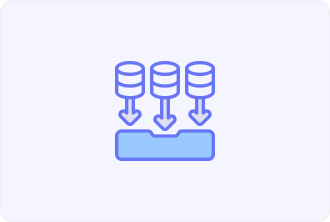Data Gathering Definition

Data Gathering — method and procedure where to collect information that is relevant and necessary in the achievement of a defined purpose. This technique can be applied in several areas, including scientific research, market analysis, and strategic planning, among others.
Then, there are many techniques for gathering the data in this sense. Consequently, the best technique depends on the objective of collection, available resources, the kind of information desired, and the population or sample of interest.
This is because one of the first and most important steps in the course of research is to understand the techniques for gathering data. Hence, there are several methods. Data collection forms the backbone of all the research carried out. The data to be collected should be relevant, reliable, and accurate towards ascertaining the questions that are pertinent to research and achieving the study objectives.
In addition, data collection is a platform for the analysis and interpretation of results. Without the collected data, the research would lack the material that it needs to support the conclusions and generalizations.
The Value of Selecting the Correct Approach
There is no one-size-fits-all approach to data collection in software development. The method should align with the project’s goals and domain. For instance, IT companies in London working on fintech platforms rely on rigorous security-focused data, while those building e-commerce apps gather behavioral analytics to refine user experience.
Meanwhile, teams developing AI tools focus on training data accuracy. Each path calls for a distinct strategy. Several important points are taken into account while selecting a method for gathering data:

- What is the main purpose of the inquiry? Defining a clear objective helps identify the right tools for debugging performance issues or improving user journeys.
- What type of data is needed? Numeric metrics, user feedback, behavioral patterns, or system logs all require different approaches.
- Who is the target group? Are you gathering insights from a specific user segment or a broader, global audience?
- What are the time, budget, and team constraints? Resource availability often dictates the scope and method of data collection.
- What tools and technologies are on hand? From analytics platforms to custom logging systems, the available stack shapes what’s possible.
- How should prompts or surveys be phrased? Precision works for system-level diagnostics, while open-ended questions may uncover unexpected user needs.
Deciding on a technique without considering all of these factors is similar to hiking through a forest with the wrong directions. It is more likely to lose focus which might not bring any useful results.
How Data Helps in Moving from Theory to Observation
When data is gathered, the isolated information becomes the building block for any analysis. Every detail logged in the records is included in the bigger picture. If we lack data, we are making guesses instead of drawing proper conclusions. Thanks to it, patterns become apparent, correlations emerge and answers are formed.
Reliable insights are possible when the data is accurate and valid. So, great care must be taken while gathering data to ensure accuracy. If collecting the data is biased, done on the wrong group or records it incorrectly, the findings can easily become unreliable. Research may only be as effective as the least solid piece of the chain.
Collecting data is important because it reinforces the enterprise’s credibility. Proper record-keeping during collection gives importance to the findings. Those who review, commission or create policies can check the approach and depend on the work’s conclusions.
Proper data collection lays the foundation for useful comparisons, ongoing monitoring, and future planning. Businesses that choose to hire Python developers experienced in quality management will see improvements more clearly and be able to assess the impact of their actions
Procedures and Methods for Gathering Data
We will investigate some important techniques and where they are most effective.
- You should use surveys when large groups are studied to discover patterns in people’s preferences. They run quickly, can handle a lot of data and are suitable for statistics, but you need to ask questions that are not influenced.
- By conducting interviews, you can get meaningful and detailed information. These methods are useful in research that needs more details than a wide range of information.
- Observation is invaluable in behavioral studies. It captures actions rather than words, revealing gaps between what people say and what they do.
- During focus groups, group members are asked for their opinions and we learn about their habits and behaviors as a group.
- When people do archival research, they look into historical documents for continuous and supported history.
- Real-time data on user behavior can be collected without having to look for it manually.
Every method tells a different story. A professional full stack development company is distinguished from amateur one by knowing when and how to employ them.
Methods Commonly Used in Digital Ventures
Many approaches are available to collect data in digital projects.
- Understanding how our users need things and the way they use the platform is guided by user research.
- Google Analytics, Hotjar and Mixpanel are just some of the tools that automatically collect information and performance results.
- System logs help discover errors, lagging areas and use of your services and setup.
- Asking direct questions on forms allows end users or stakeholders to give their feedback directly.
- Using APIs, you can fetch external data from partner platforms and integrate or examine it.
Methods can be used on their own or combined, depending on what is happening in the project.